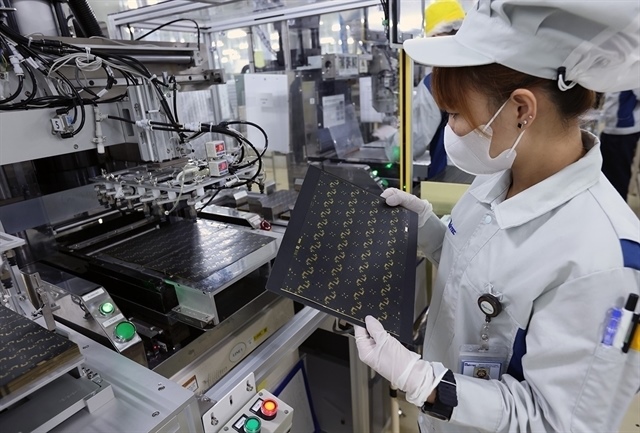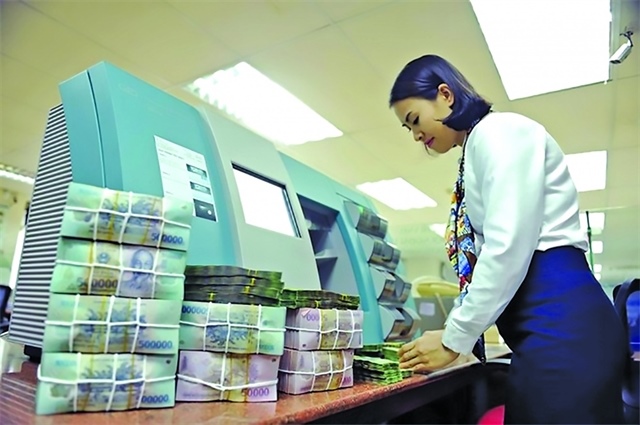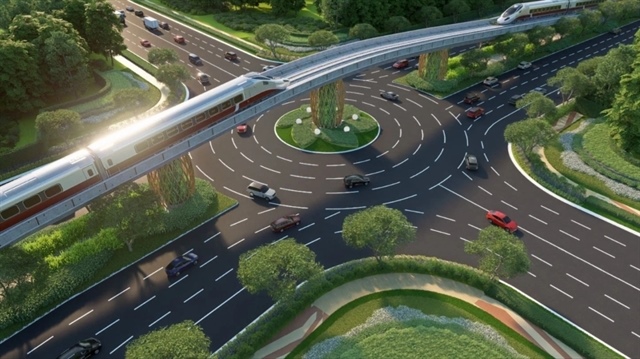New wave of billion-dollar FDI projects hits Vietnam
New wave of billion-dollar FDI projects hits Vietnam
In the first seven months of this year, Vietnam lured in nearly $22 billion in foreign direct investment (FDI) with the comeback of multibillion dollar projects, promising a breakthrough in FDI attraction for the whole year.

The age of multibillion dollar projects
On July 25, Korean Lotte Group and the Ho Chi Minh City People’s Committee signed a contract to construct Eco-Smart City in Thu Thiem New Urban Area.
According to the contract, the developer of the project is a joint venture between four of Lotte’s affiliates, namely Lotte Asset Development Co., Ltd., Lotte Shopping Co., Ltd., Hotel Lotte Co., Ltd., and Lotte Engineering & Construction Co., Ltd.
The construction will be kicked off in the third quarter of this year and be implemented within three years with a total investment capital sum of VND20.1 trillion ($884 million) without the expenditure of compensation and land clearance.
“Lotte placed a deposit of around VND2 trillion ($89.6 million) for the land use fees for six plots of land in Thu Thiem New Urban Area to develop the project. They are determined to develop the project,” said Nguyen Thanh Phong, Chairman of the Ho Chi Minh’s People’s Committee.
Thus, based on the investor’s determination and the feasibility of implementation, Lotte may soon receive the investment certificate.
One month ago, the Ministry of Planning and Investment granted investment certificates for two billion-dollar thermal power plant projects. One is Nghi Son 2 thermal power plant, invested by Japanese investors with a total capital sum of $2.8 billion, and the other one is Singaporean-funded Nam Dinh 1 thermal power plant worth $2.07 billion. Both of them are implemented under the build-operate-transfer (BOT) format.
Other projects, contributing to the extending list of newly-registered projects worth dollar billions, are Samsung Display’s $2.5-billion expansion of its existing display module assembly line in the northern province of Bac Ninh and the $1.27-billion Block B of O Mon gas pipeline, invested by a joint venture of Vietnam Oil and Gas Group, PetroVietnam Gas Corporation (PV Gas), and Mitsui Oil Exploration Co., Ltd. (MOECO) from Japan.
Additionally, the $4-billion agreement between BRG Group and Sumitomo Group to develop a smart city at the north of Hanoi as well as Hung Nghiep Formosa Ha Tinh Steel Co., Ltd.’s intention to pour an additional $1 billion into its existing Formosa Ha Tinh Steel project need to be mentioned.
Concerns over project feasibility
Consecutive increases in the volume of newly-registered projects and added capital to existing projects shows Vietnam is an attractive investment destination in foreign investors’ eyes, however, the projects’ feasibility has been questioned on more than one occasion.
In 2008, there was also a wave of multibillion dollar FDI projects in Vietnam, however, many of the new projects were not kicked off or delayed in construction, leading to the withdrawal of investment certificates.
It is difficult to see the feasibility of the two BOT thermal power plant projects because of two reasons. Firstly, numerous investors expressed ambitions to develop thermal power plant projects under the BOT form and some of them have been licensed, however, in reality, very few projects are under construction.
The second concern is the environment. Both of the above BOT projects are coal-fired thermal power plant projects, amidst numerous warnings about environmental pollution caused by such power plants. Thus, the government would have to supervise the construction period, and especially the technology in use.






















